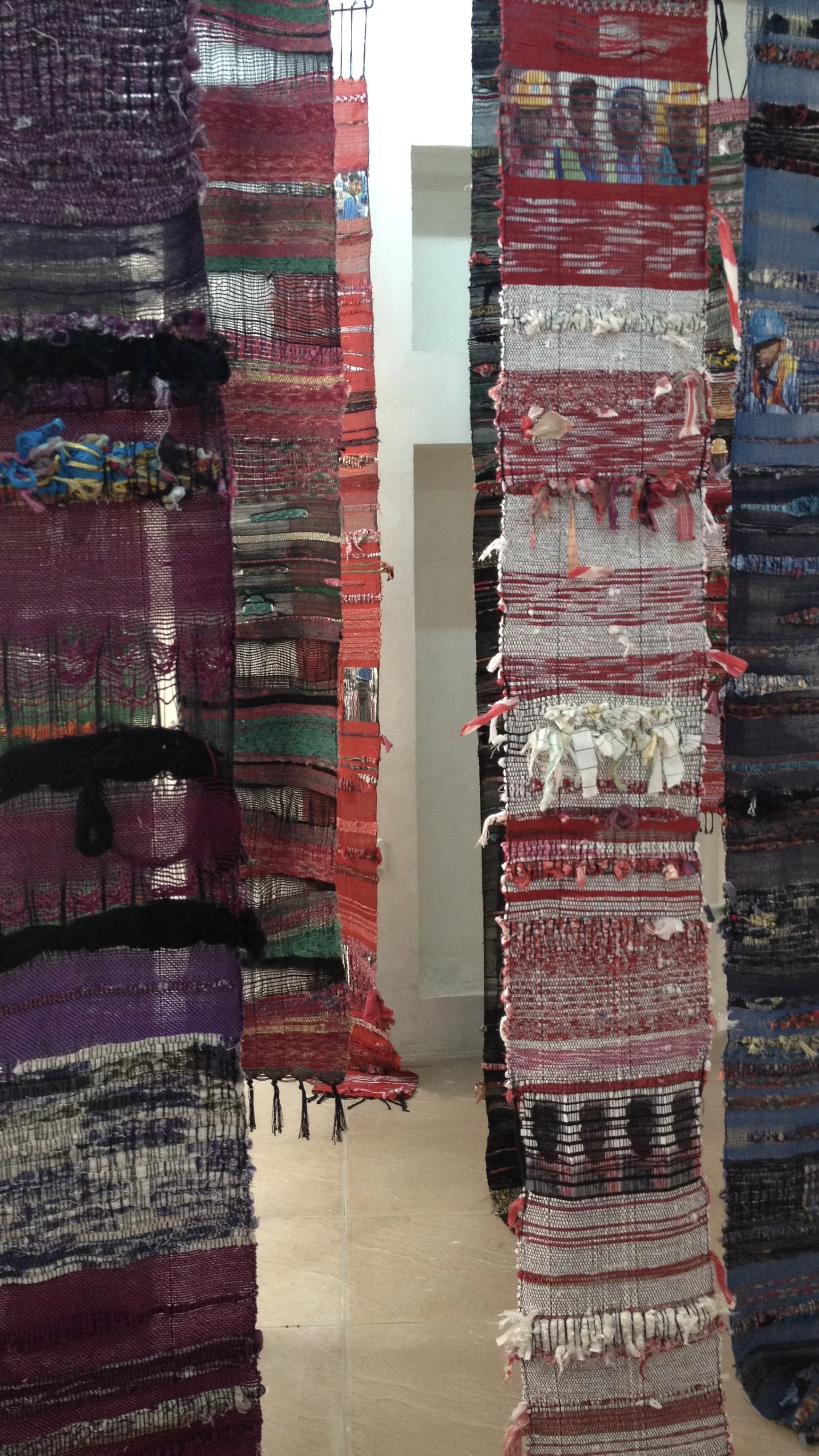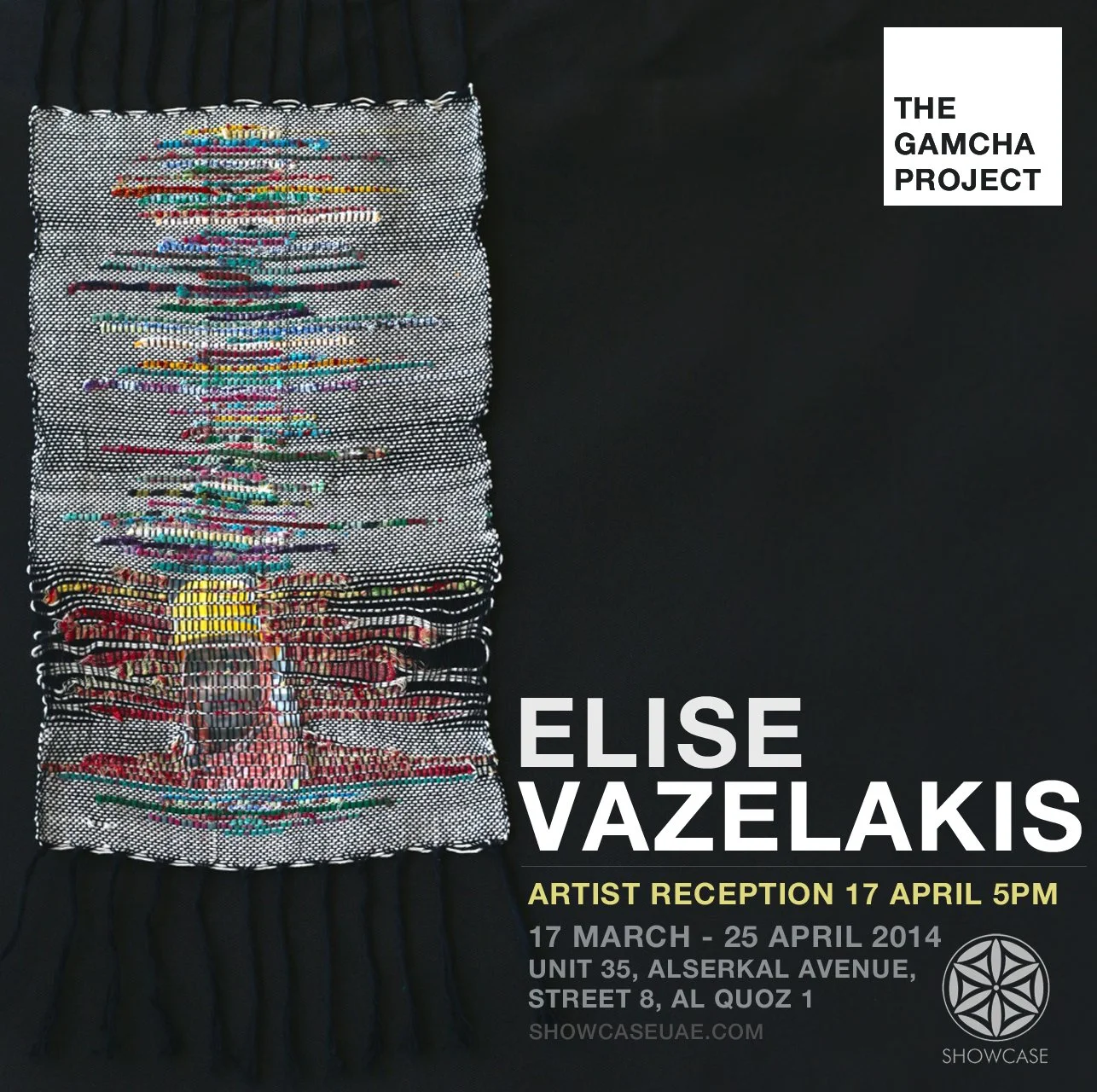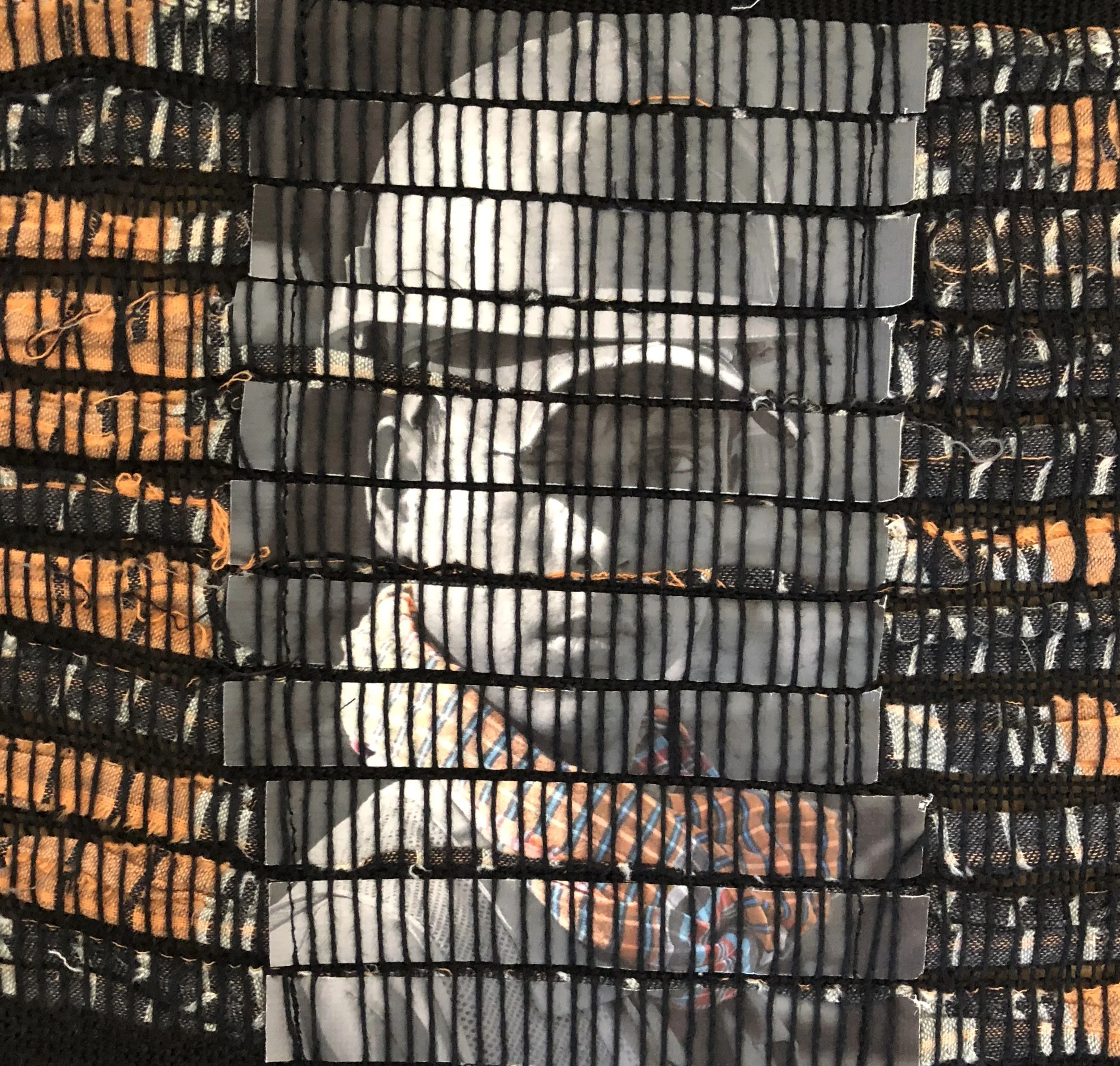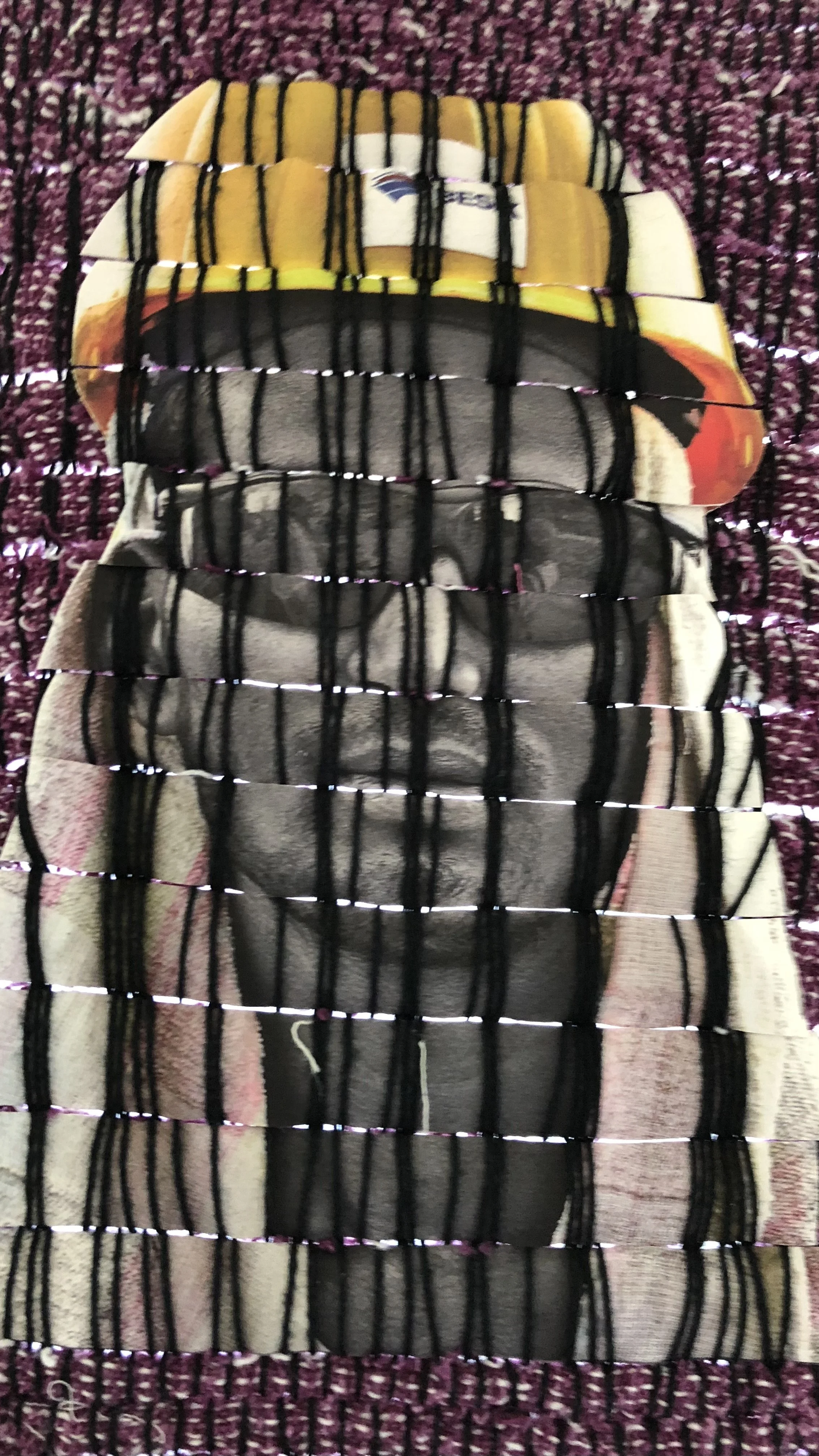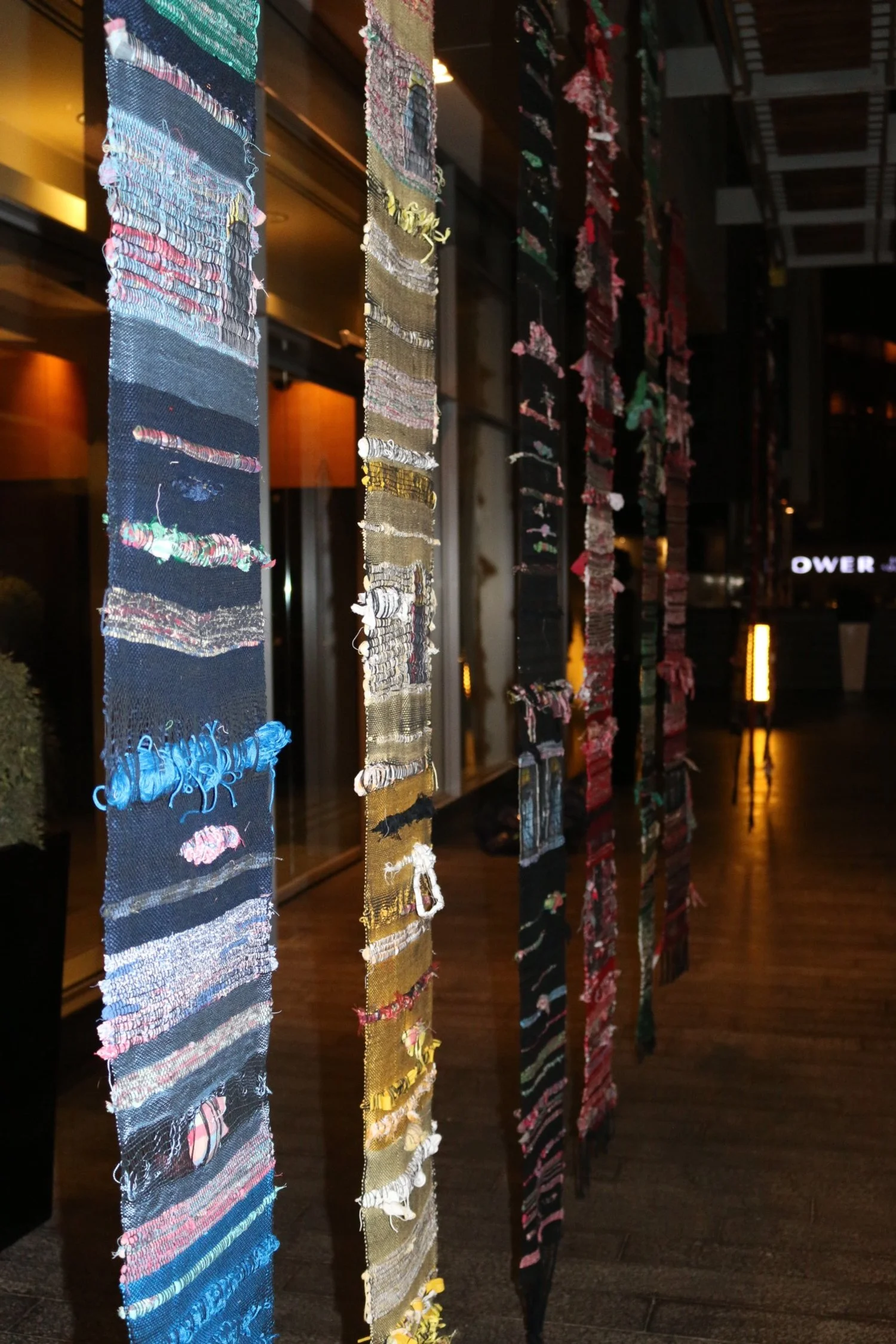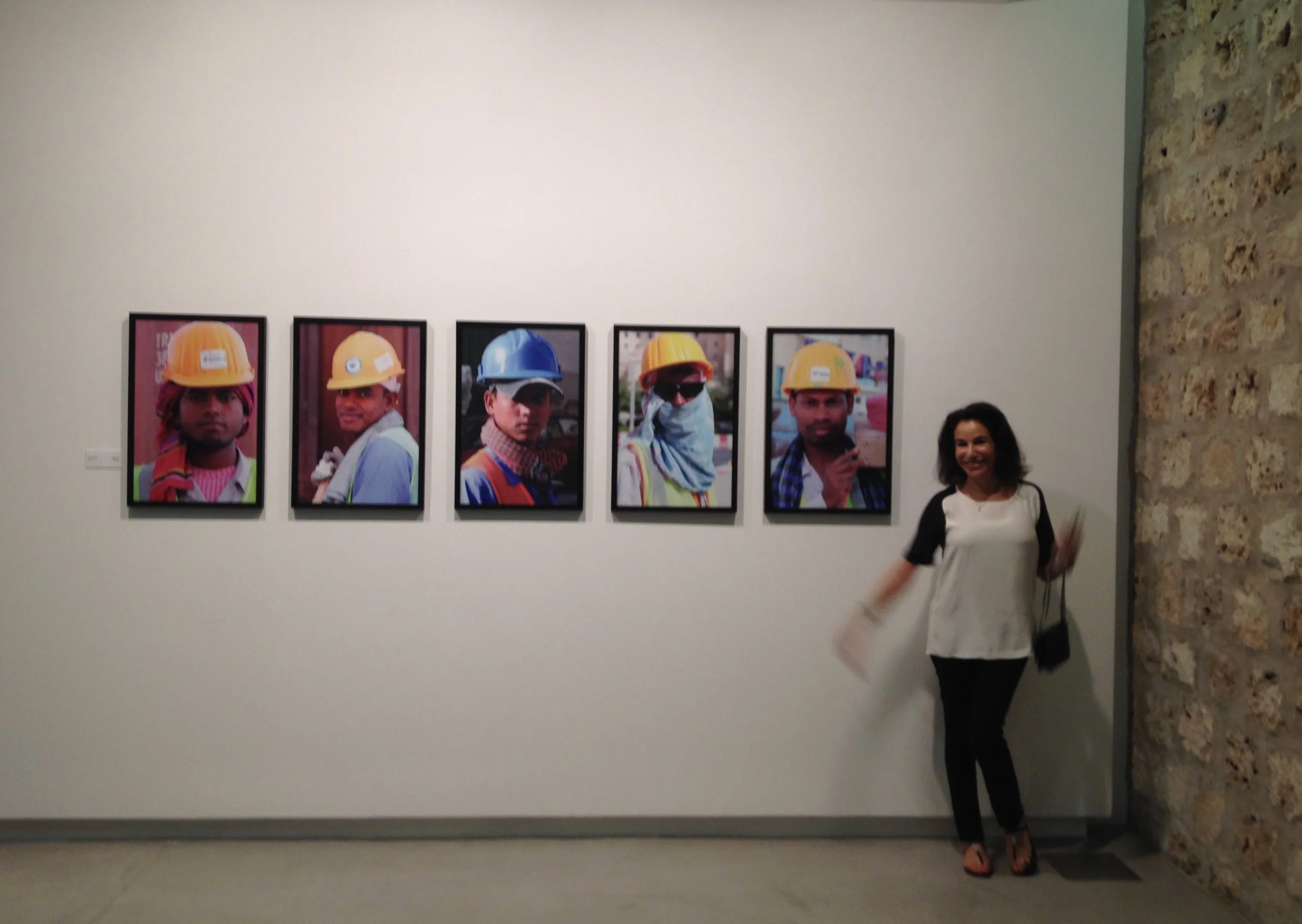The works in this series pay homage to subjugated immigrant workers in the city of Dubai. While living in Dubai as an artist, I quickly became aware of the city’s silent laborers who toiled long and hot hours on construction sites that litter the city. Imported from Bangladesh, India, and Pakistan, their identities had been relegated to anonymous strangers in a strange land, far from families and alienated from their cultures. As I began to photograph and interact with them, I was inspired to communicate their plight through my art.
Otherwise dressed in plain work clothes, what stood out to me was their colorful headwear. Each worker wore a unique, brightly colored, Indian cotton towel, known as a gamcha. While seemingly innocuous, I was struck by how their headwear felt emblematic. The gamcha seemed to provide a proclamation of and connection to their culture. Ubiquitous in their own countries, in Dubai, the gamchas stood out as cultural identifiers that tethered them to their homeland. The vibrant colors and patterns spoke for them.
Through earnest but linguistically clumsy overtures, I developed a trust with the workers. I began trading their used gamchas for care packages consisting of a new gamcha and 10 dirhams acquiring hundreds of towels. My gamcha pieces weave together fabric, photographs, and found objects from various construction sites around Dubai. They are portraits, both collective and individual, of the anonymous men that built the city. The series tells their stories, offering a voice to those whose status remains below Dubais’ societal radar.
